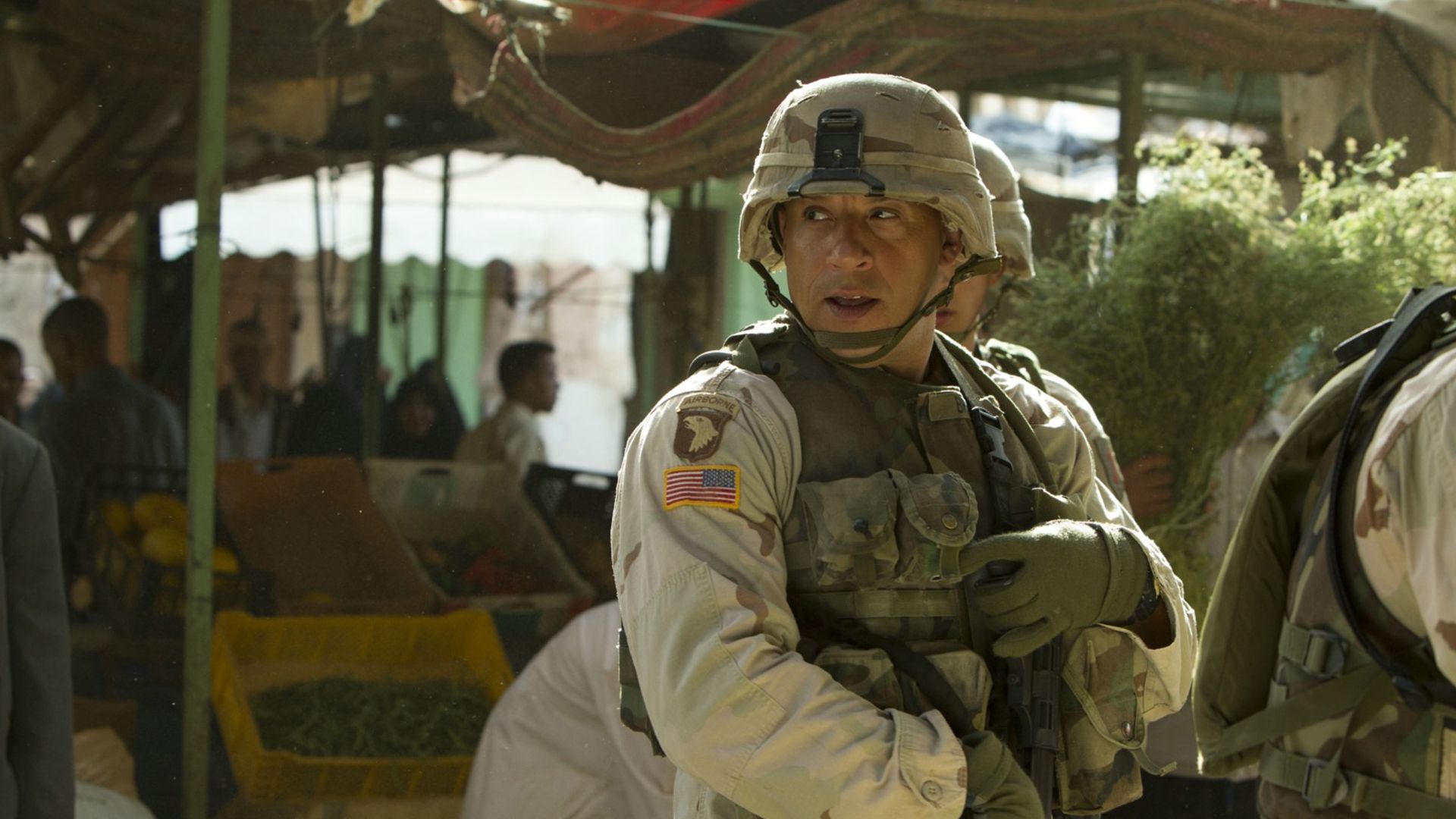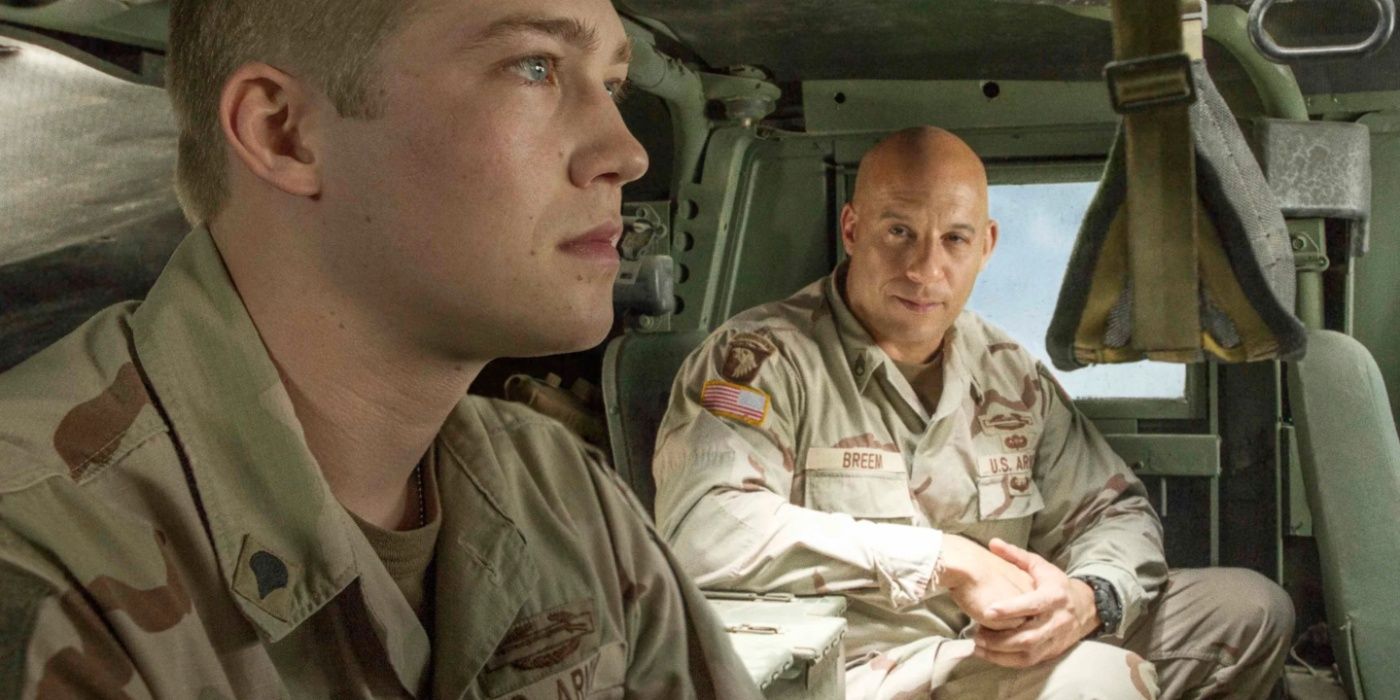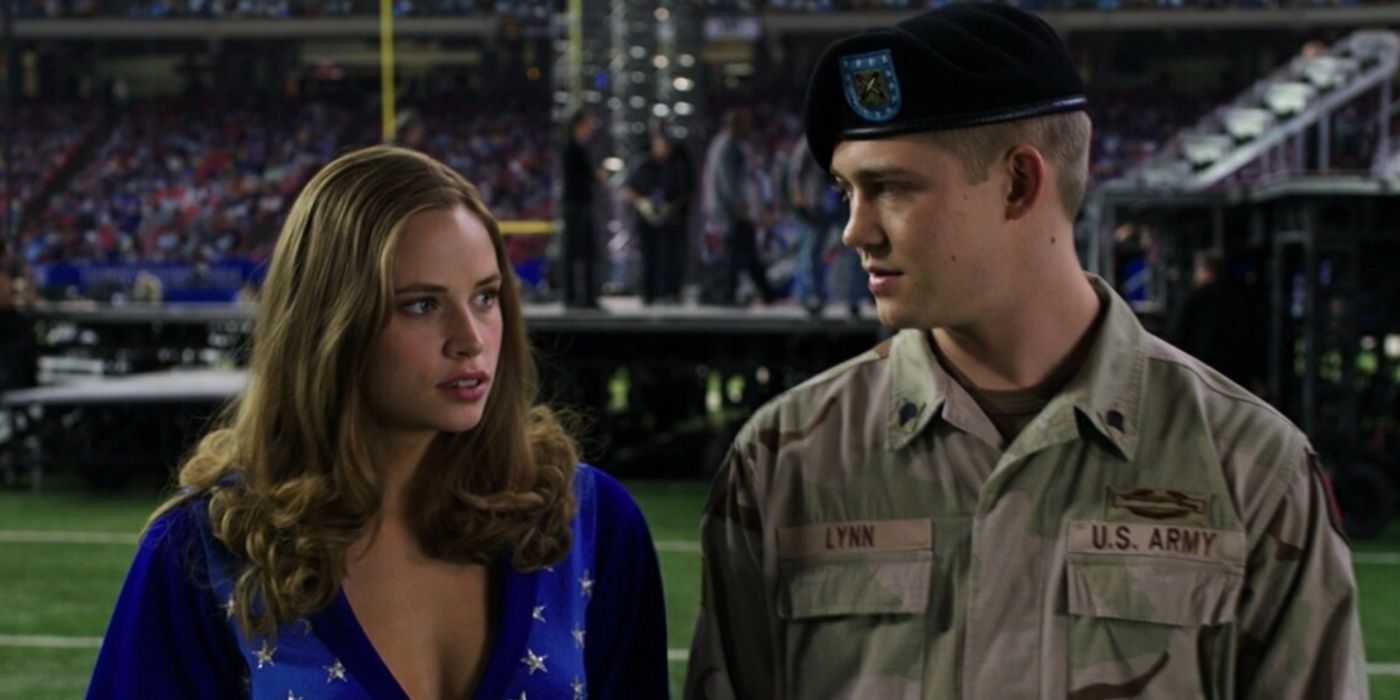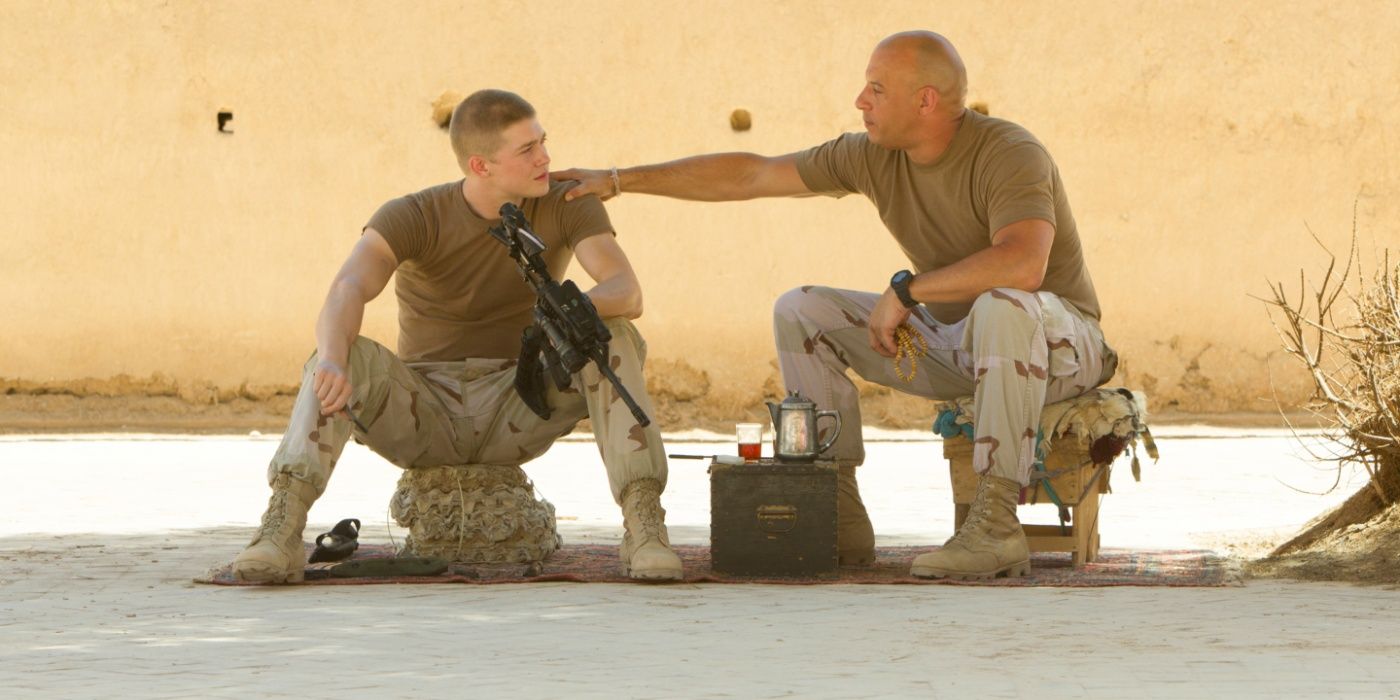
Most people probably think of Vin Diesel’s role in Saving Private Ryan when they picture him in a war movie. Who could forget his character, Private Caparzo, and his loud, memorable lines like, “You gotta pay attention to detail!”? Or the shocking moment when he witnesses a bullet strike a comrade’s helmet? This acclaimed film, directed by Steven Spielberg, really launched Diesel’s career, leading to bigger opportunities in Hollywood. Spielberg actually discovered Diesel through his short films, Strays and Multi-Facial. At the time, Diesel was working as a telemarketer, trying to find consistent acting work.
Vin Diesel has appeared in other war films besides the Fast & Furious series. Between Furious 7 and The Fate of the Furious, he starred in Billy Lynn’s Long Halftime Walk, which was adapted from Ben Fountain’s novel. Unlike Saving Private Ryan, the movie wasn’t successful at the box office – it actually earned less than its $40 million production cost. This was largely due to its limited release; it was shown in only five theaters worldwide. The reason for this limited release was technical.
‘Billy Lynn’s Long Halftime Walk’ Addresses the Ugly PTSD Monster

TriStar Pictures
Post-traumatic stress disorder (PTSD) remains a significant issue for many veterans, and Hollywood has often tried to shed light on it. The film Billy Lynn’s Long Halftime Walk tells the story of Billy (Joe Alwyn), a 19-year-old soldier who bravely rescues Sergeant Virgil “Shroom” Breem (Vin Diesel) during a fierce battle in Iraq. This heroic act earns Billy a Silver Star and unexpectedly thrusts him and his unit into the spotlight. Known as the “Bravo Squad,” they are brought back to the United States for Shroom’s funeral and embark on a cross-country publicity tour that culminates with a performance at the halftime show of a Dallas Cowboys Thanksgiving game.
On game day, the members of Bravo Squad were driven to the stadium in a limousine by a team representative and a movie producer hoping to make a film about their story. During a press event, Billy noticed a Cowboys cheerleader and started playfully flirting with her. He also shared his conflicted feelings about being celebrated on a day that held so much pain for him. The film reveals Billy’s plan to seek help from a psychiatrist to secure a medical discharge, which reinforces the movie’s message against war.
Just as Billy Lynn’s Long Halftime Walk seems to fall into a predictable and somewhat boring pattern, the story takes an unexpected turn, exploring the difficult realities faced after returning from war. The loud music and commotion of the halftime show, with Destiny’s Child performing, causes one soldier to relive a traumatic experience, leading to an attack on the stage manager and a security guard. This event then triggers a flashback for Billy, revealing the incident that previously made headlines.
Billy’s team is called to a school under attack, where one of their own, Shroom, is wounded. Billy instinctively tries to help, opening fire on the attackers, and freezes, reliving the intense moment. He soon realizes he’s been standing still for several minutes. Afterwards, Billy attempts to connect with a woman he’s interested in, but she encourages him to return to his military duties, making it clear she’s drawn to his life as a soldier and isn’t supportive of him wanting to leave. Adding to their troubles, the team is also treated unfairly by a studio executive. What challenges await Billy and his squad next?
The Technical Advancements in Billy Lynn’s Long Halftime Walk Made a Nationwide Screening Impossible

TriStar Pictures
Director Ang Lee pushed the boundaries of filmmaking for his latest project, using a remarkably high frame rate of around 120 frames per second (fps) combined with 3D and 4K UHD resolution, as reported by Deadline. This made it the first movie ever filmed at such a high rate, surpassing Peter Jackson’s The Hobbit: An Unexpected Journey, which used 48 fps. Lee chose this innovative technique to create a deeply immersive and realistic experience for viewers, inspired by the source material.
Lee was aware of Peter Jackson’s attempt to film at 48 frames per second, but he chose a different approach. Jackson’s film, The Hobbit: An Unexpected Journey, received largely negative reviews, so Lee opted for 120 fps instead. However, this decision wasn’t completely confirmed until just weeks before filming began.
Due to the film’s complex high frame rate and the expensive equipment required to show it properly, only five theaters worldwide were able to display it in its full resolution and at its fastest speed: two in the US and three in China.
The high frame rate presented several challenges during filming. Because each shot was so difficult to capture and expensive, both the director and actors needed to rehearse extensively. The high resolution also meant actors couldn’t wear makeup, as it would be too noticeable on camera. Furthermore, the crew had to pay close attention to details like lighting, needing more lights to compensate for the faster frame rate. Finally, all action scenes were filmed exclusively from the main character’s perspective.
None of It Was Worth It in the End

TriStar Pictures
It’s great to see ambition in filmmaking, and Ang Lee certainly aimed high with Billy Lynn’s Long Halftime Walk. However, his innovative techniques didn’t really translate to a compelling experience for most viewers. The film didn’t attract a large audience in theaters, suggesting the technical achievements didn’t resonate with a wider audience. Even on streaming, it blends in with other war movies and doesn’t stand out.
After the initial release, the film underwent several revisions to work in more theaters. According to The Hollywood Reporter, these changes included creating multiple versions with different frame rates – 120 fps for 2D, 60 fps for 3D, and the standard 24 fps – to allow for a re-release. Eventually, the film also received a release in Dolby Cinema, with two different high dynamic range formats for both 2D and 3D viewing.
After achieving critical acclaim with the beloved film Brokeback Mountain, Ang Lee’s recent war drama has been met with mixed reviews. While visually ambitious, the film prioritizes style over a compelling story. Critics at Rotten Tomatoes currently give it a 44% rating, pointing out that the innovative visuals don’t quite deliver and that a promising story is hampered by a weak script.
Though perhaps not the original intention, the movie ultimately feels like an exaggerated, Entourage-esque tale, with the actors clearly enjoying their roles as ambitious, love-struck characters chasing fame. It really captures what’s currently wrong with Hollywood – the idea that you need to be flashy to get noticed, and that audiences demand extravagance. It’s surprising to see a respected director like Lee involved in something so over-the-top. A well-told, straightforward story is all it takes to connect with viewers.
Those familiar with the film Stop Loss will find echoes of its story here, as both center around soldiers returning home to unexpected realities. However, Stop Loss features more engaging characters and subplots. We find ourselves feeling for Billy not because his struggles are particularly compelling, but because the other characters are so underdeveloped and bland.
Ang Lee also made a mistake by not using Vin Diesel’s popularity to its full potential. Diesel was incredibly popular at the time, fresh off successful Fast & Furious movies. Even though his character doesn’t appear much, more flashbacks would have helped the story feel more complete. Another option would have been to set the first part of the film in Iraq before moving to the stadium. Lee has only directed one other movie since then, Gemini Man, and it wasn’t a success. Hopefully, he’ll direct another strong film soon.
Read More
- Zerowake GATES : BL RPG Tier List (November 2025)
- Super Animal Royale: All Mole Transportation Network Locations Guide
- T1 beat KT Rolster to claim third straight League of Legends World Championship
- Hazbin Hotel Voice Cast & Character Guide
- How Many Episodes Are in Hazbin Hotel Season 2 & When Do They Come Out?
- Terminull Brigade X Evangelion Collaboration Reveal Trailer | TGS 2025
- What time is It: Welcome to Derry Episode 3 out?
- ‘Now You See Me: Now You Don’t’ Ending, Explained
- Where Winds Meet: March of the Dead Walkthrough
- Apple TV’s Neuromancer: The Perfect Replacement For Mr. Robot?
2025-10-26 23:04